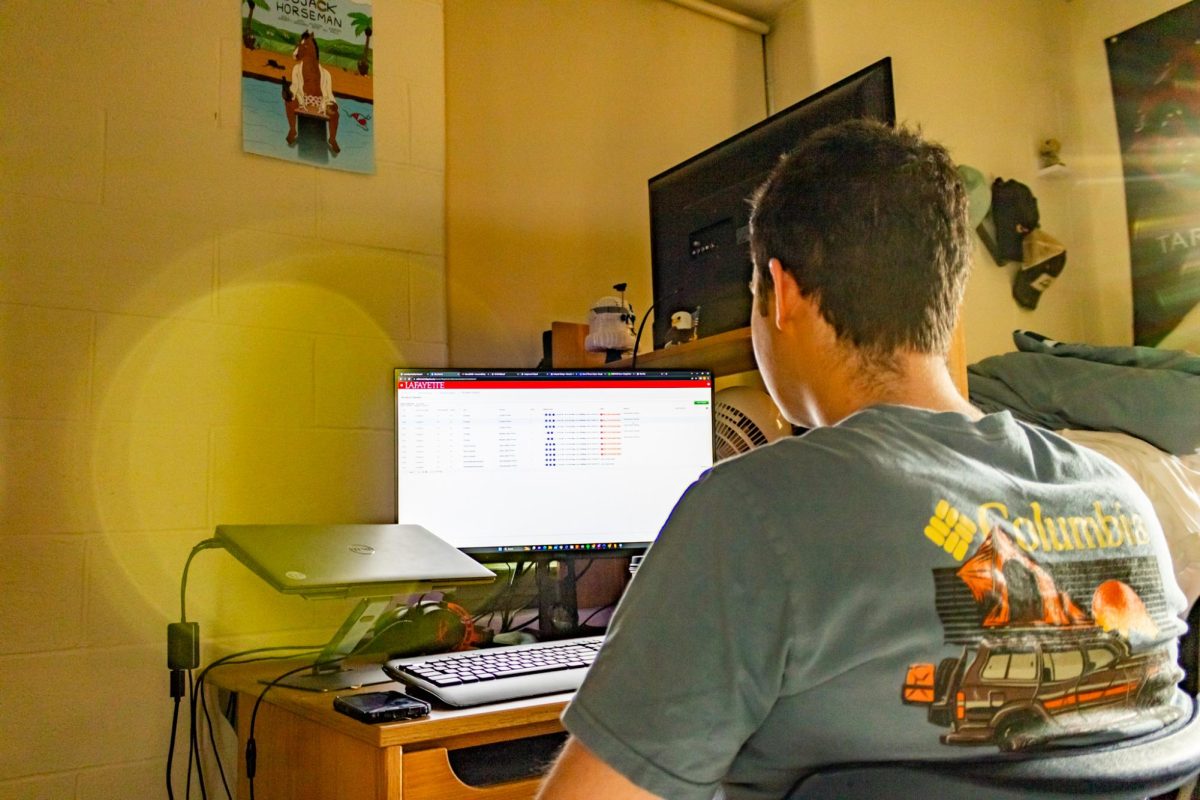The college has updated the course registration process to include new advanced features in preparation for the spring semester. The changes will attempt to alleviate the stress of registering for courses.
The new changes have upgraded the Banner Self-Service site — the software students have long used to register for courses — allowing students to insert their proposed classes into Banner ahead of time. Previously, students had to put course registration numbers into Banner, Lafayette’s academic resource website, immediately after the registration period opened at 7 a.m. on their class year’s designated day.
“Student registration is the final element to be upgraded to version 9, which will retain all registration and course search functions as earlier versions, while introducing some new functionality including ‘Plan Ahead’ and ‘Conditional Add/Drop’ (swap) features,” Dean of Advising Tim Cox wrote in an email.
Brandon Morris, sophomore class dean, expects the new changes to benefit students during this semester’s registration process.
“The ability to prepare and register from a ‘plan ahead’ feature will be extremely helpful,” Morris wrote in an email. “In the past, students I have met created plans on various platforms and had several systems, but now you can do this right in Banner.”
Students can now use the “Prepare for Registration” page which allows students to see if there are actions, such as obtaining permission from instructors, that must be taken before registration. There is also the option to print an individual schedule ahead of time. However, the plan ahead schedule, which mimics Coursicle, does not guarantee registration for a specific course.
Additionally, the “Conditional Add/Drop” feature will swap a class in one transaction, as opposed to the previous system of separate add and drop transactions.
Lafayette Extended Orientation leaders, better known as LEOs, are tasked with training freshmen on how to properly register for courses. Not only will LEOs have to navigate through the new course registration system themselves, but they will also have to adequately teach their orientees about the new process.
“As LEOs we were given a kind of first viewing to this new course registration,” Leo Ontiveros ’26 said. “In my opinion it kind of overlooked some important issues.”
Among the issues include confusion on to how to act in the event that a course is not available during sign-up. The new process forces students to have to restart the process and put in course registration numbers. Lectures and labs are now connected, meaning students have to sign up for a lab from the given lecture period, something Ontiveros found frustrating.
“I think just in general, this new update to the whole course registration website is just gonna be a challenge for all of us,” Ontiveros said. “The LEOs will make sure that we will understand it and guarantee the best first-year registration process for our orientees.”
Andrew Hamacher ’24 said it would be helpful for there to be a search tool on the actual course registration page while registering so that if a student does not get into their backup classes, they have the ability to search for classes on the same page.
“It’s always going to be stressful,” Hamacher said.
However, students have also noticed the positives compared to the previous course registration process.
“I think it will help a lot of people with the organizing aspect,” Hamacher said.
“It’s helpful to see your schedule in the same screen,” Ontiveros said. “When you’re looking up courses, you can see if there’s a course that is unavailable. It’ll stand out from the rest, and [students] will know ‘I can’t take this course.'”
Morris and Cox agree the upgrades will help students better prepare ahead of time for course registration.
“Understanding where you are as a student in your academic journey is important, and I think the changes will help students map all of this out along their journey,” Morris wrote.
Maddie Pedone ’26 contributed reporting.























































































































